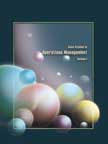The Tata Nano Project - Making of the World's Cheapest Car
|
|
ICMR HOME | Case Studies Collection
Case Details:
Case Code : OPER078
Case Length : 16 Pages
Period : 2003-2009
Organization : Tata Motors Ltd.
Pub Date : 2009
Teaching Note :Not Available
Countries : India
Industry : Automobiles
To download The Tata Nano Project - Making of the World's Cheapest Car case study
(Case Code: OPER078) click on the button below, and select the case from the list of available cases:


Price:
For delivery in electronic format: Rs. 300;
For delivery through courier (within India): Rs. 300 +Shipping & Handling Charges extra
»
Operations Case Studies
» Operations Short Case Studies
» View Detailed Pricing Info
» How To Order This Case
» Business Case Studies
» Case Studies by Area
» Case Studies by Industry
» Case Studies by Company
Please note:
This case study was compiled from published sources, and is intended to be used as a basis for class discussion. It is not intended to illustrate either effective or ineffective handling of a management situation. Nor is it a primary information source.
Chat with us

Please leave your feedback

|
|




<< Previous
Excerpts
Background Note
|
The history of Tata Motors dates back to the mid-1900s. In 1945, Tata Motors was incorporated as Tata Engineering and Locomotive Company Limited (TELCO). The company was engaged in manufacturing locomotives and engineering products. Three years later, it launched a steam road roller in association with the UK-based Marshall Sons...
Nano - The Car
The Nano had a 623 cc rear engine and a rear wheel drive. The engine was a two cylinder petrol engine. The fuel economy of the car was expected to be around 21 kilometers per liter under city driving conditions...
|

|
The Nano Project
The project to build the Nano started in 2003. Girish Wagh (Wagh) was selected as the leader of the 500-member team which was chosen to develop the Nano. Right from the beginning, the team members were asked to be as frugal as possible to maintain the low price target of the car...
ENGINE
Initially, the Nano team thought that they would outsource the engine. However, after considering all the engines that could be suitable for Nano, they decided to create an engine on their own. In the year 2005, they started working on the new engine...
STEERING AND DRIVESHAFT
In the Nano, the steel rod of the steering was replaced with a steel tube. This helped to reduce the weight of the car. Rane Group, the supplier of these tubes, redesigned them to make them of one piece instead of the usual two pieces...
WHEELS AND TYRES
The wheels for the Tata Nano were supplied by Wheels India, promoted by the TVS Group. The company developed a lighter wheel as compared to other passenger cars in India...
SEATING SYSTEMS AND INTERIORS
The seating systems were supplied by Tata Johnson Controls Automotive. The front seats of the Nano were based on a single support structure as an alternative of
'individual rail'...
OTHER COMPONENTS
In an effort to reduce costs, the Nano team laid emphasis on each specific component of the car. For example, in order to reduce the weight of the car and save costs, the Engine Induction System was made of plastic instead of aluminum...
Excerpts Contd...>>

|
|










